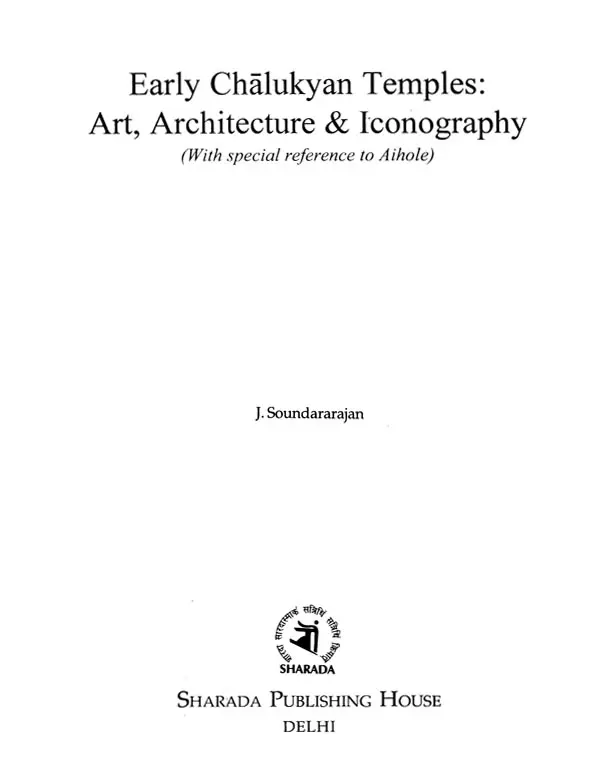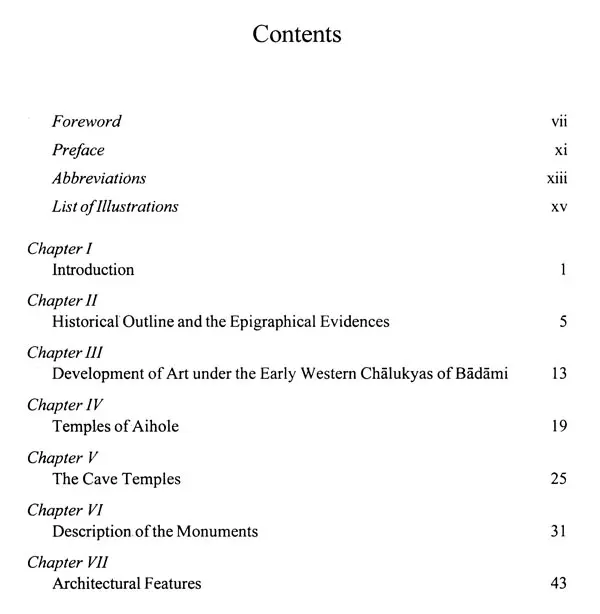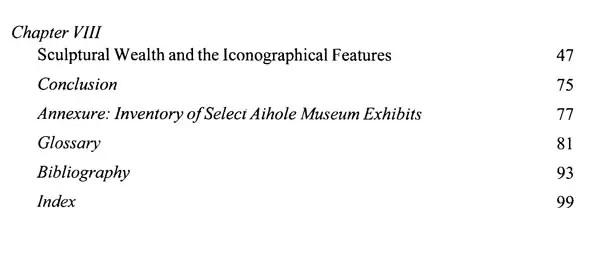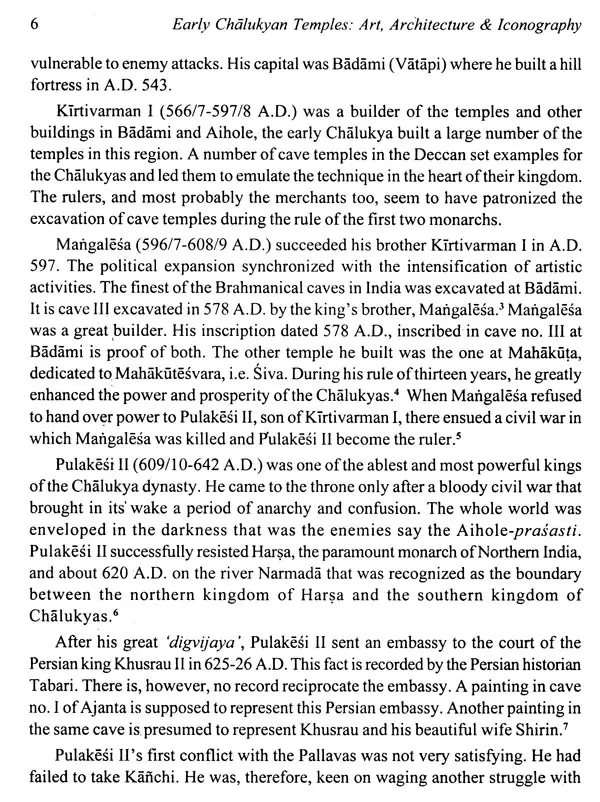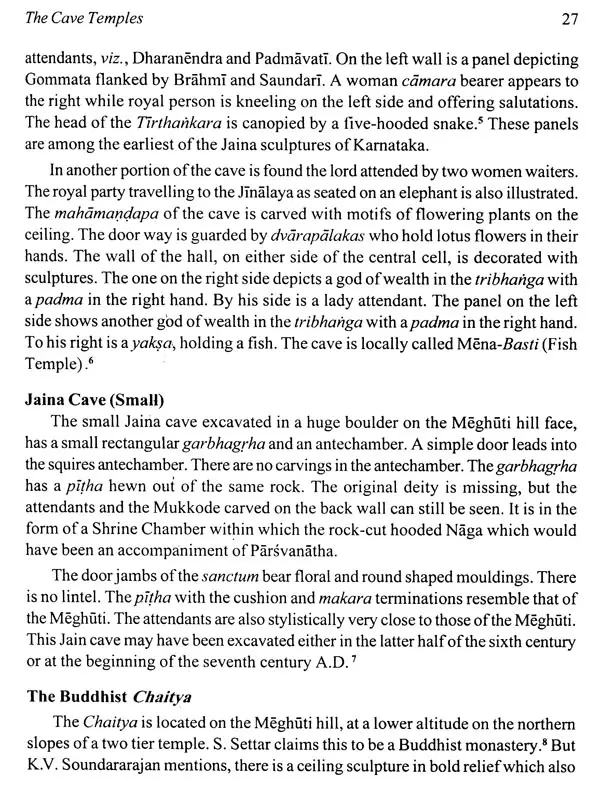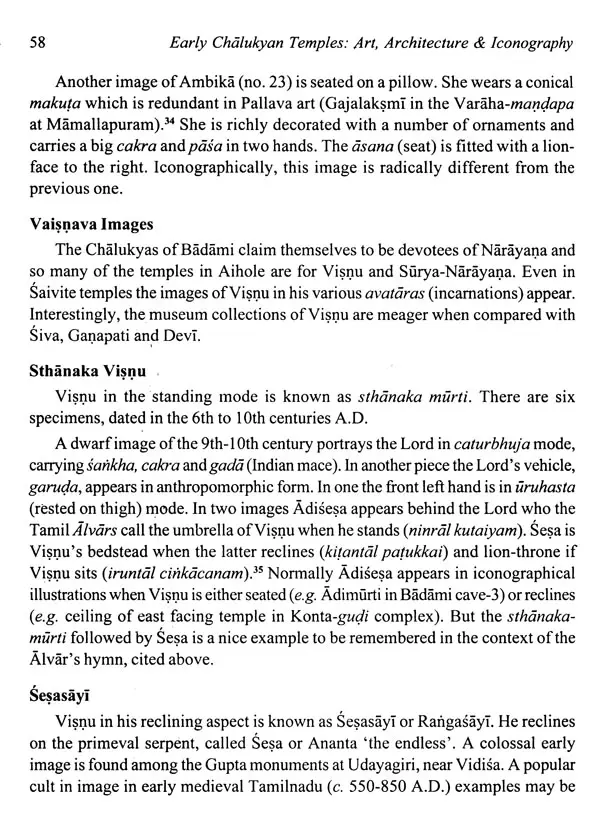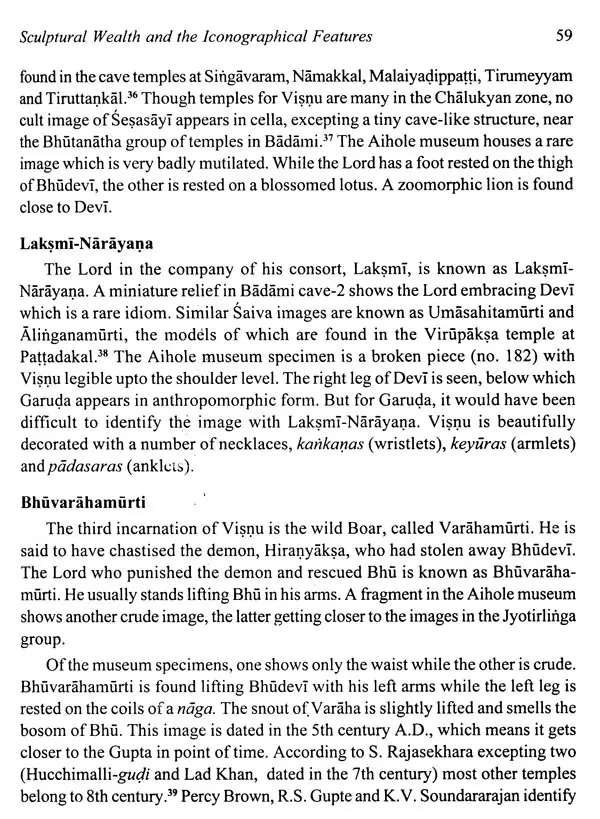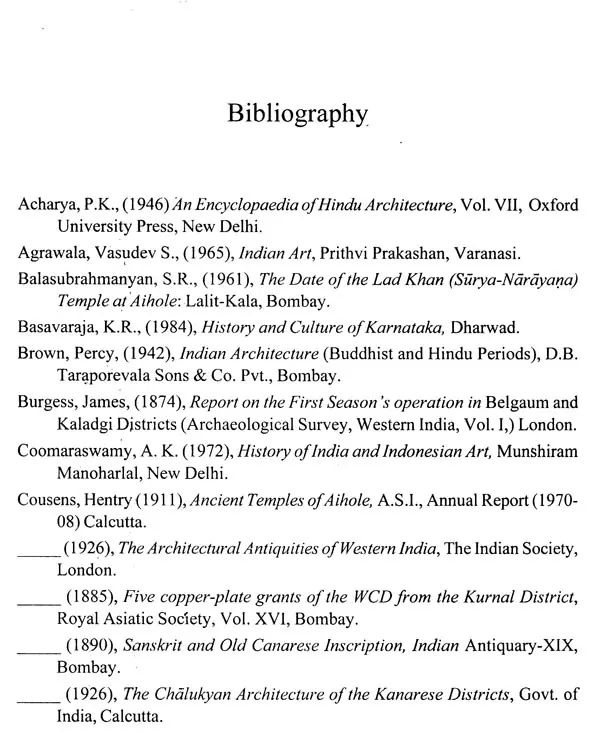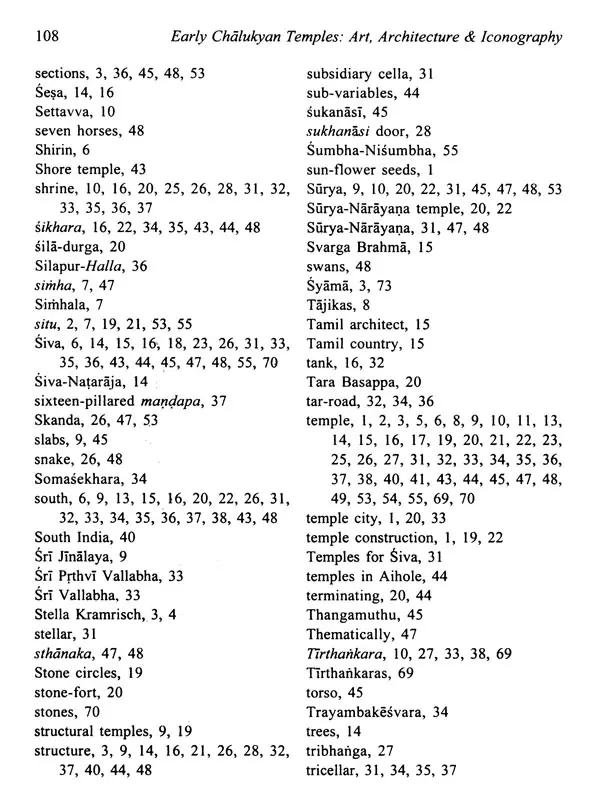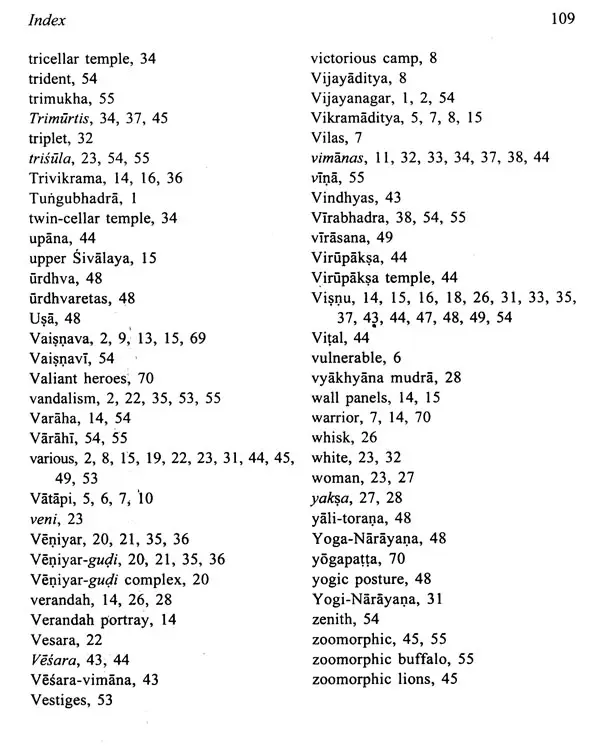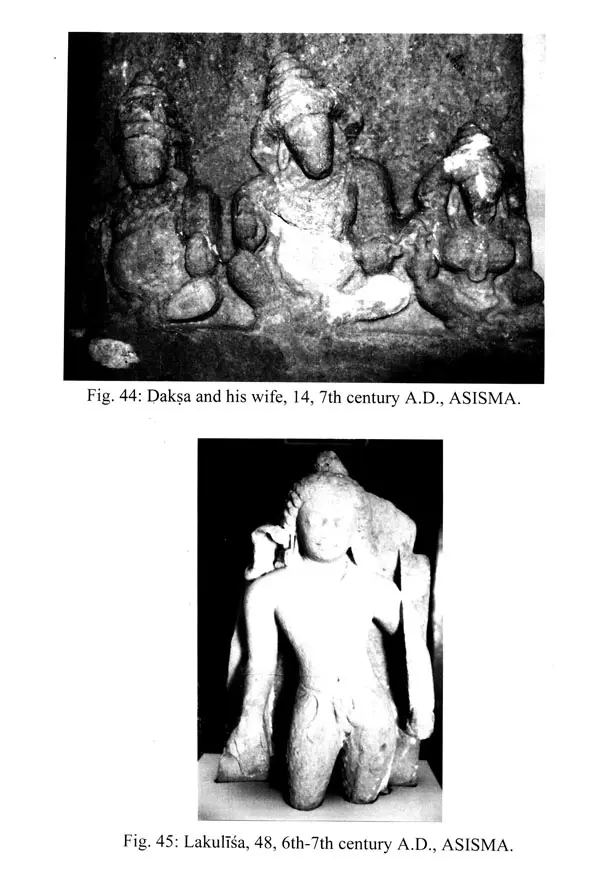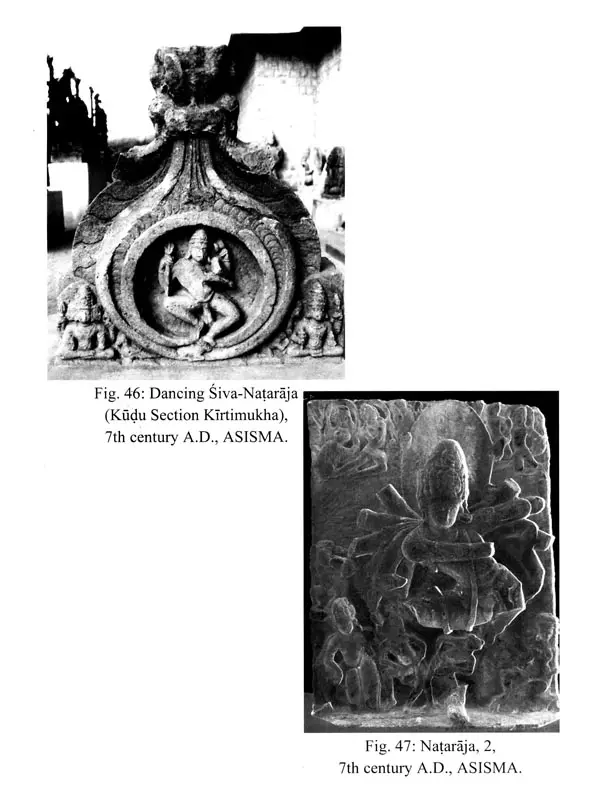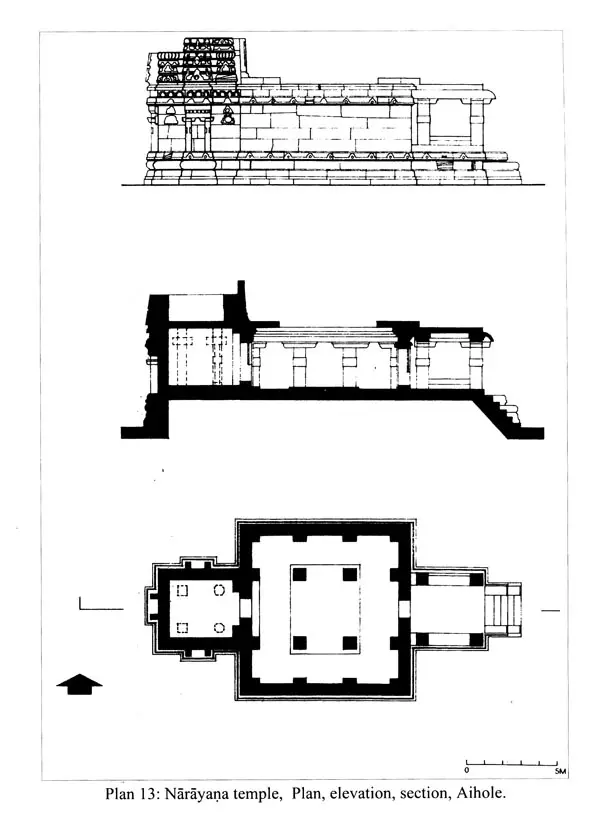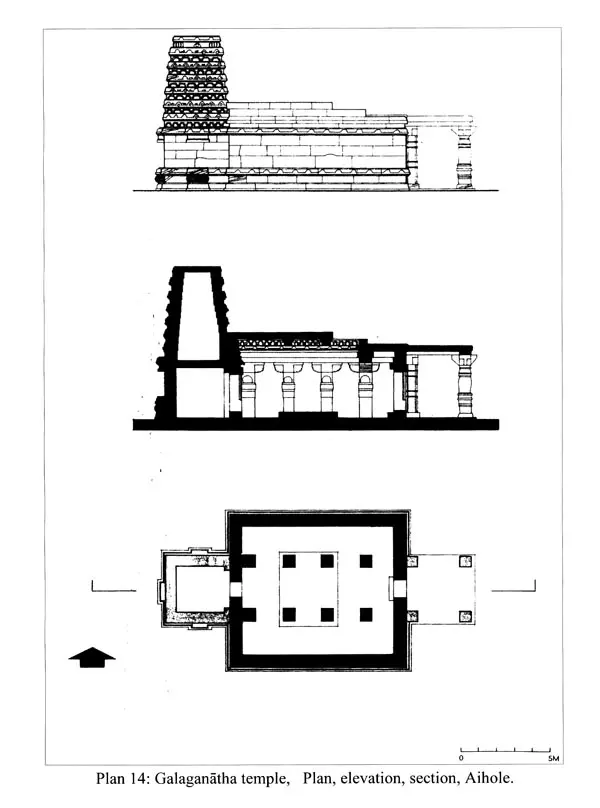
Early Chalukyan Temples- Art, Architecture & Iconography (With Special Reference to Aihole)
Book Specification
| Item Code: | UAE995 |
| Author: | J. Soundararajan |
| Publisher: | Sharada Publishing House, Delhi |
| Language: | English |
| Edition: | 2009 |
| ISBN: | 9788188934607 |
| Pages: | 180 (Throughout B/w Illustrations) |
| Cover: | HARDCOVER |
| Other Details | 10.00 X 7.50 inch |
| Weight | 670 gm |
Book Description
The Architectural futures really constitute of the real architectural wealth of the site. A vivid explanation on sculptural wealth and iconographical futures too added colorize to the work. Details of iconography and classification of art forms with conclusion give an ardent explanation for the socio-religious binding of the society represented through the erection of the temples. It is also supported by annexure: the inventory of Museum exhibits besides a glossary for ready reckon use of some terms and terminology along with bibliography and relevant illustrations to support the work for visual effects.
The author is a member of many of the professional historical societies: The Indian Art History Congress, Tamilnadu History Congress and Epigraphically Society of India. He has in his credit a book Nataraja in South Indian Art (2004) and 21 numbers of research articles in scholarly international, national journals and the New Indian Express. His contribution to journals in "East and West" volume - 53 (2003), Rome- Italy, also adds feather to his cap. He had also prepared a guide book on the Chalukyan Center of Art while working at Aihole.
I am happy to introduce to the scholars Dr. J. Soundararajara's book on Early Chalukyan Temples: 'Art, Architecture & Iconography. The author has collected vast materials for this book in Architecture, Sculpture and Iconography. There are numerous inscriptions belonging to this period and Dr. J. Soundararajan has spared more pains in preparing and presenting the same with complex currents and cross- currents of thoughts about the subject. The illustrations, the method of Art- Interpretation and its appreciation are noteworthy. It is possible; to differ from his views and even to question them but his lucid exposition and treatment of the subjects kindle interest in one and all.
I congratulate the author for bringing out this painstaking and useful work on the studies of Indian Art History.
During this period, my doctoral guide, Prof. Raju Kalidos and his son, Dr. R.K.K. Rajarajan, visited Aihole at least two times. Rajarajan did the wonderful job of photographing 'all the architectural and sculptural masterpieces in color.
Dr. Raju was the mastermind behind all my academic ventures. He simply loved the Badami caves and walking in the Aihole village. Once, his stay did last for nearly three weeks. The result was a number of articles and books published both at home and abroad. Sri R.K. Parthiban alias Bharat (Brandenburg Technological University, Cottbus, Germany) was of great help to me in computerizing the date at the early stages 'of the work. I am thankful to him.
Dr. S. Rajasekhara of the Karnatak University did his doctoral work on the Aihole monuments, preceded by his teacher R.S. Gupte who was among the pioneers to write of Aihole. Research never stops with an individual or institution.
After 100 years from this date, there may be archaeologists working on the sculptures of Aihole, Badami, Pattadakal and Mahakata.
Nobody could foresee what will be the outfil of the monuments in such a future date and to which presiding God the Durga temple in Aihole will be assigned. Research is what we read, write and speak. Reading "making full", "writing exact" and "conference ready". As our observations go on increasing by the new data that we discover, research will never be defunct in any future date. Several Henry Cousins may come, several Rajas may come, but Malaprabha continues to flow. She may alter the directions of her flow but the river will be there and there will be enough matter for the researcher to read and write.
The present book is my small compliment to the AS I, its officers and servants on site, in Dharwad Circle and Delhi Circle. Several of them were of great help to me, including the public. I am particularly obliged to the Deputy Superintending Archaeologists, Sri K.V. Rao, Dr. Varaprasadh Rao, Superintending Archaeologists, Sri S.V. Venkatesaiah and Sri Virbhadra Rao, and Dr. Dayalan. My masters at the Institute of Archaeology, ASI, New Delhi, were Dr. B.R. Mani, Dr. G.C. Chaulay and Sri P. Venkatesan. I am thankful to all for their encouragements.
I am indebted to my father 1. Jayaraj and mother J. Jeyamani who gave me "Life and Educational fondly remember the fillip given by my wife G. Juliet for extending her moral support and good wishes. Let the blessings of my teachers, parents and elders also. grace my son S. Siberian, S. Preethi Janitha others in memory are Sri 1. Peter, Sri R. Ramasamy Gunavathy, Dr. L.K. Sivanesan, Sri S. Gurupatham, Sri K. Sivakumar, Sri G. Rajkumar, and Sri R. Karthik. Smt. A. Bansal of Sharada Publishing House has taken care to bring out the book at a short notice with much care and dedication. I am deeply obliged to her.
The Village
Aihole today is a slumbering village with a population of 3,100 who live amidst the monuments in small houses (about 800).in few cases, historical edifices have been converted into living apartments for the human beings and the cattle. The barren land, fertilized by the Malaprabha and the monsoon, yields dry crops (maize, sun-flower seeds, and peanuts). The cattle population is equal to the human. The animal product is the famous Aihole-mosaru (curd). A tranquil folk, the people busy themselves with their rural avocations and are jealous of the temples and consider them their pride.
Aihole is reachable from Badami (47 kms), Bagalkot (40 kms) and Hunagunda (21 kms) The nearest railway stations are Bagalkot and Badami. The airport is at Hyderabad (450 kms). There is a guest house of the Government of Kama taka, which on order supplies food. The village is not well equipped with restaurant facilities and local conveyance. The frequency of state transport Omni buses is less. Spread over an area office kms the monuments are mostly visited by walk or private vehicles.
It seems that after the 14th century A.D., this temple city went into oblivion and the monuments were occupied by the village folk until their recovery by the ASI, nearly a century ago. Many of the temples had become defunct, neglected, not conserved properly and much vandalism perpetrated by the forces of nature and the human enemy. Several hundreds of priceless sculptures and architectural fragments lay on the sacred soil of Aihole and many went into the bowels of the earth "un wept, un-honored and unsung". The pioneering officers of AS! worked diligently to recover these artistic pieces from the teeth of annihilation and erected a temporary shed thirty years ago to house the neglected sculptures. A museum was built in 1987 A.D. and the collected specimens ushered into the house. Due to lack of space several pieces lay outside and steps to further expand the museum are afoot. The museum in its inventory has 356 objects while many more in situ, to be spotted and taken to the care of the Museum.
Categories of the Monuments
The variety of monuments in possession fall under various heads such as architectural fragments,. unbroken and mutilated pieces of sculptures and so on.
The iconic themes come under various thematic denominations such as Jaina, Buddhist, Saiva, Vaisnava, Sakta, Ganapatya, and Kaumara. The monuments cover a time span of 800 years and fall under various dynastic lineages such as pre-Chalukya, Chalukya of Badami, Rashtrakutas, and post-Rashtrakutas. Hoysala and Vijayanagar vestiges are not to be found, which means Aihole by about the 14th century A.D. had been obliterated from the cultural map of the local Hindu tradition.
Book's Contents and Sample Pages
